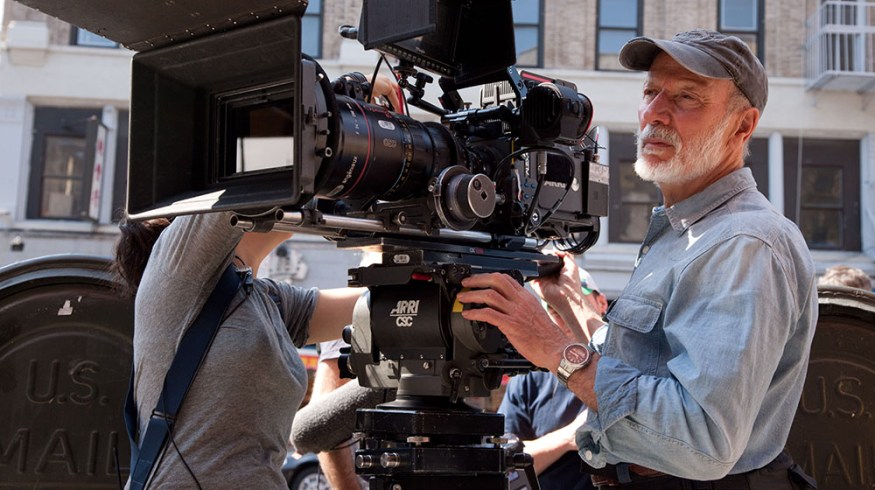
Cinematography Tip: Capture Smooth Panning Shots at 24fps
One of the biggest headaches associated with shooting at 24fps is the jittery look of vertical lines you get when panning. This calculator will help you eliminate that issue entirely.
Top image of Chris Menges from Movie City News
The reason we love 24p footage so much, is the very same reason it can be so frustrating to work with – it’s just not smooth. Unlike 30p or 60p footage that can appear so smooth that it’s hyper-realistic looking, 24fps material has a slight jitter to it, which makes it feel more ‘filmic.’
Here’s a comparison from Derek Rowe that highlights the differences between 24fps and 60fps:
This jittery effect goes unnoticed most of the time, except of course in certain circumstances — one example being panning shots. If you’ve ever watched back footage from a shoot and noticed that a building, sign, or anything else with a vertical line seemed to appear jumpy or jittery when panning, you probably weren’t factoring in panning speeds.
To clarify exactly what this looks like, take a look at this test video I shot a couple years back with my GH3. The intention was to compare my new camera to the GH2 and see which had more noticeable jitter when panning:
GH3 – Panning Judder Test from Noam Kroll on Vimeo.
This issue can be problematic in other ways too – for example scrolling credits can often appear jittery at 24fps if they aren’t set to the right speed. But for the purpose of this post, we’ll focus on the production side of things and how to avoid this issue in camera.
Thankfully, there’s a bit of a science to getting smooth motion when panning in 24p. Some of the biggest variables that come into play include: lens length, shutter speed, resolution, and panning angle. Once you understand how these elements affect each other, you can quickly figure out how long it should take you to pan from one side of your shot to the other.
For example… let’s say you’re shooting on a 35mm lens at 24p on a Super 35mm camera. Let’s also assume that the shot you’re trying to capture calls for a panning angle of about 45 degrees — or in other words: you need to rotate the camera 45 degrees in your shot. To smoothly capture this shot you’d need to take at least 8 seconds to pan across your shot. If you were to move more slowly, that’ll work too… But any faster and your image becomes jittery.
This may sound confusing, but there are many free calculators online that will help you determine the best panning speed for your shot. One of the ones that I use most often and highly recommend is from RED Digital Cinema. It can be found on their website here: Free Calculator from RED
Here’s another from STAM Interactive: Pan Speed Calculator
And lastly, here’s a quick video from the great Dave Dugdale that’s full of tips that can help you pull off a great panning shot.
Got any tips for your fellow cinematographers? Let us know in the comments below!





